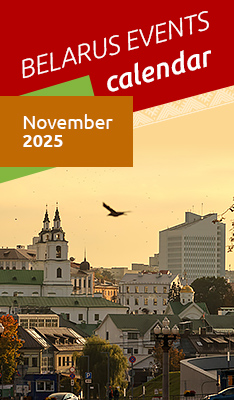Humanitarian cooperation
Gomel Oblast implements over 50 initiatives under EU/UNDP project

GOMEL, 31 July (BelTA) – Over 50 local initiatives have been implemented in Gomel Oblast as part of the EU/UNDP program, BelTA has learned following a regional conference on 31 July to review the results of the project delivery in Gomel Oblast.
The conference analyzed the results of over three years of work. “Some 51 initiatives were endorsed and implemented in Gomel Oblast over this time. The total budget neared €865,000,” Natalia Adamchik, UNDP Local Initiative Contest Coordinator, told BelTA. All districts of Gomel Oblast could take part in the main contest of local initiatives; at this stage the region submitted 16 initiatives. Five pilot districts were shortlisted for the next round of the contest. Those were Bragin District, Vetka District, Korma District, Buda-Koshelevo District, and Chechersk District. Some 35 initiatives were implemented during the second contest.
Addressing the participants of the conference, Gomel Oblast Deputy Governor Andrei Konyushko emphasized the importance of sustainable development and noted that every district of Gomel Oblast has area peculiarities, which should be taken into account while setting local development targets. He thanked all the stakeholders for their contribution.
As for the sectoral structure of the initiatives, some 32% of the projects targeted education; 16% of the initiatives had to do with infrastructure development; 12% of the initiatives were implemented in social services, tourism, economic growth, and health and 4% of the projects dealt with environmental conservation. The Area-Based Development (ABD) approach was used while implementing local initiatives.
According to Natalia Adamchik, one of the peculiarities of the initiatives in Gomel Oblast was focus on inclusiveness. For example, as part of the project to promote inclusiveness in local communities, hobby studios were set up at the local social services center to enable people to pursue their interests and hobbies. Workshops to do arts and improve household skills were also arranged for patients of the Uvarovichi Residential Care Center for the Elderly and People with Neuropsychological Diseases in Buda-Koshelevo District.
The initiative implemented in Bragin District by the Eco Innovation local foundation is meant to create new jobs and promote self-employment. The initiative seeks to encourage small entrepreneurship in rural communities by teaching local farmers organic farming. Other initiatives like Bread Museum in Chechersk District, Center for Providing Resources for the Linen Carousel Festival in Korma District, Let’s Revive Rushnik Together in Buda-Koshelevo District are designed to promote tourism and preserve local traditions.
All population groups were involved in the initiatives. All in all, about 25,000 people took part in the implementation of the project in Gomel Oblast.
In line with the rules of the project, partners should provide at least 10% of financing. However, the amount of co-financing provided by them averaged 23% in Belarus. There were six partners per one local initiative. However, one of the initiatives run in Buda-Koshelevo District was upheld by 11 partners.
During the review conference, the participants shared best practices in developing ARD passports of their districts, addressing local issues, and building up partner relations between authorities, commercial organizations and NGOs.







 print version
print version make home page
make home page add to bookmarks
add to bookmarks

